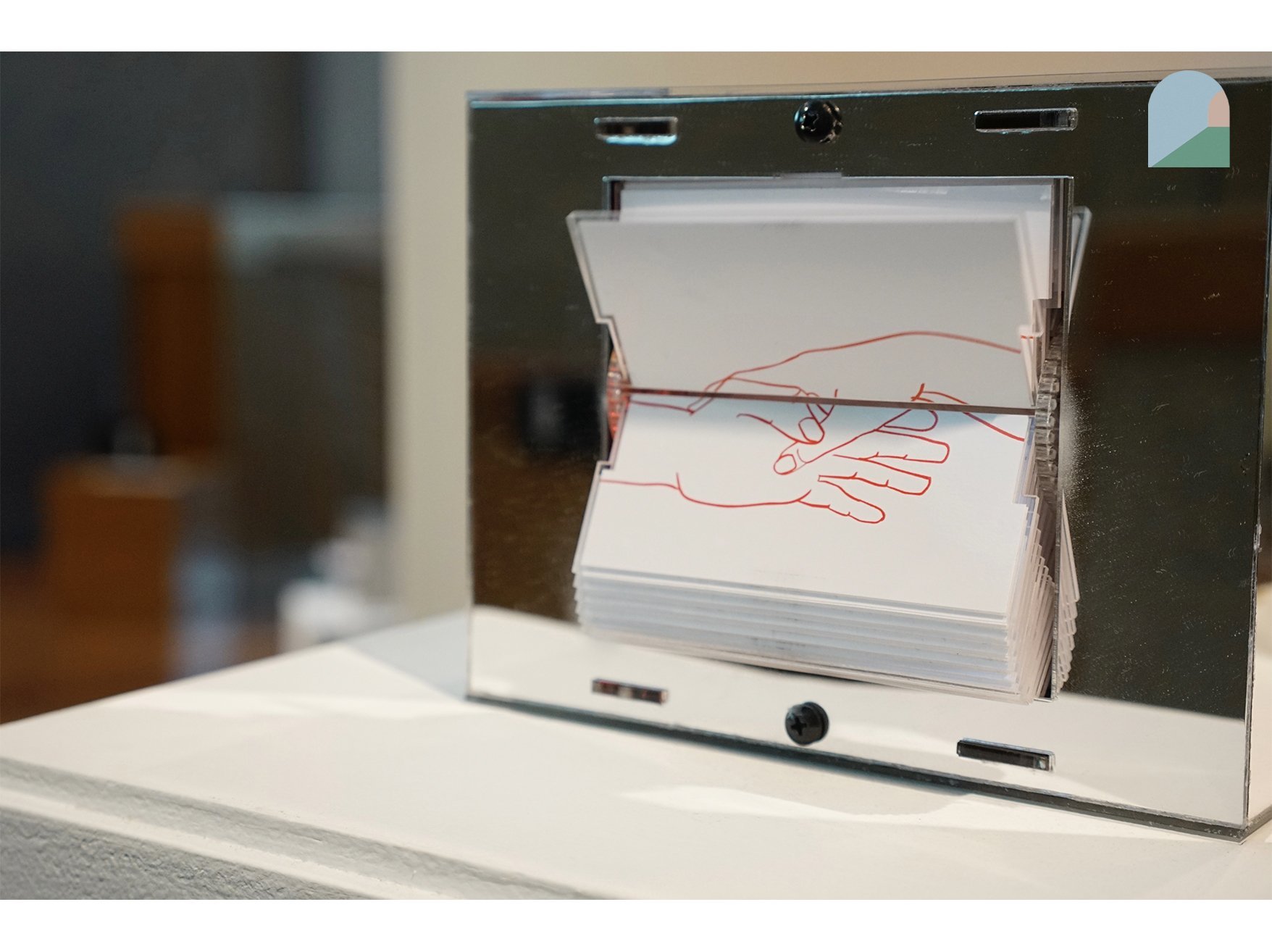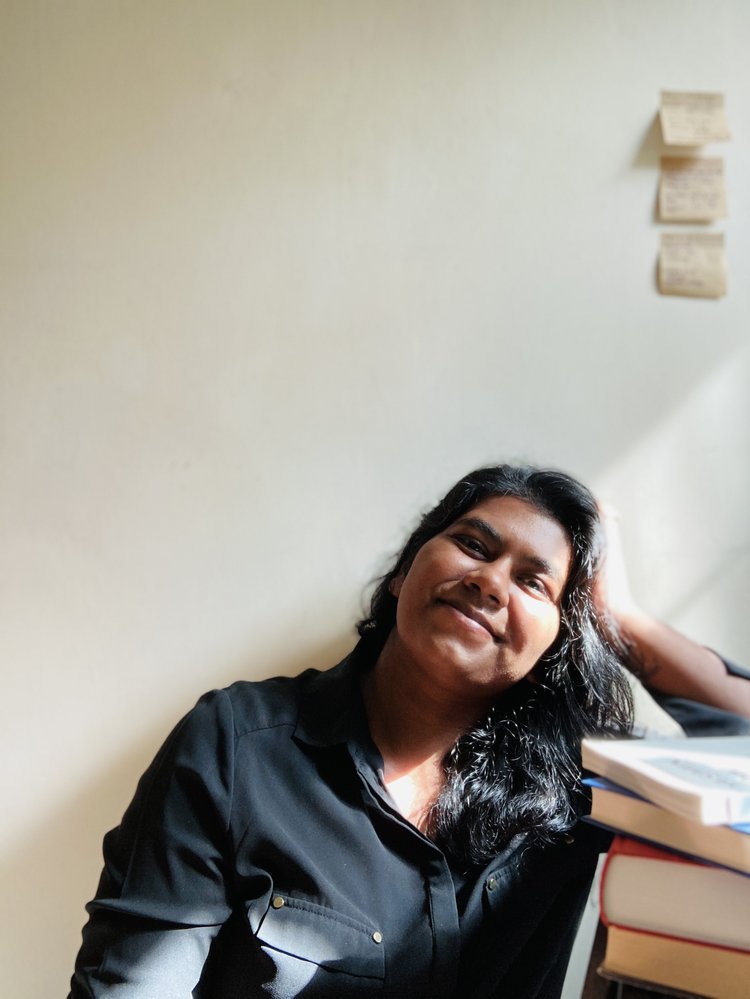An Ode to Truth Which Binds Us All
Jevon Chandra’s AMSR, ‘The Faraway Nearby’
By Miriam Devaprasana
This is a writer's response to Jevon Chandra's AMSR. AMSR is an Art & Market project featuring digital and physical small rooms showcasing the practices of emerging artists and writers. For more information, click here.
The road(s) we traverse is the ultimate journey of becoming. The point where roads converge beckons us to view, in retrospect, the ‘there’ and ‘then,’ allowing a metamorphosis of the soul to grow towards who we are now and the person we are becoming.
‘The Faraway Nearby’ is a space for the soul to wander in a passage of reverie, crafted by one who honours familiarity. It is a map of his inner being, left for us to trace and draw threads with our own. It stands as a journey of solidarity and solitude rooted in the simple burden of Truth.
Jevon Chandra, ‘Other Things’, 2022, pencil and cut-outs on silk paper, candle. Image courtesy of the artist.
Against worn-out stains of the past are shadows of a man’s life. In the room called ‘Other Things’ lies a deep sense of longing to wander in, a solemnity that lingers as soon as the soul beholds the space.
here
there
everywhere
It is a call to be still before declarations of the Self, extended from different plains onto a journey of highs and lows.
Though stifled by sheer, dawn makes its presence known with the gradual release of light in the mornings. Words blend into the background, requiring the gaze to be precise to perceive what is removed.
Jevon Chandra, ‘Other Things’, 2022, pencil and cut-outs on silk paper, candle. Image courtesy of the artist.
Towards the night, though darkness seems to overwhelm, words are amplified by candlelight. In the now, we are surrounded by Truth so tangible that even the darkness cannot hide it.
Truth is uncomplicated; it is simple. Perhaps what hinders us from declaring truth is the burden of its proclamation, where fear and doubt linger. Anxiety weighs the weary mind and soul until we are ready to speak our truth boldly.
Once it is out there, we are left to be still and wait in silence for what comes next.
Jevon Chandra, ‘Songs of Companionship 1’ 2019, laser-cut acrylic, servo motor, die-cut digital print Bristol paper flaps, Arduino, code 19.1 x 14.2 x 14.4cm each. Image courtesy of the artist.
Sometimes, words fail to describe what the soul longs to declare, and we begin to understand the worth of our senses. To touch another is to cross the invisible boundaries of physical space. When familiarity surrounds the atmosphere, there is a quiet confidence that the reaching out of a hand will meet the companionship of another. Whoever they may be, each movement is a promise never to let go of the space they carry. In its essence, it is an act of faith rooted in love.
Its continuity, however, only remains if we choose to tune out the static noise of distraction.
There, we find the repetitive nature of these movements as a symbol of Ahavah — love in all its forms.
Loyal, fierce love offers a sense of belonging, refuge, and home. It is the kind that generously interprets what the other needs and boldly responds with attention, empathy, and friendship. It represents what it means to love and be loved, gifting the soul with truth and sweet reminisce.
When I seek beyond the depths of forgotten memory, my soul remembers love.
Love waits, love is true, love forgives, love restores.
Love declares that I am found; I am made new.
Memory is vital to the way we tell our stories. It enables us to tell and retell, weaving in patterns and connections of the then and now. It is a map we depend on to remind us of ourselves; lose that, and we lose who we are at the core.
Photographs are allies to memories, capturing emotions, actions, reactions, and responses to things around, all in one click. These captured stills of the past provide a passage for deep longings of remembrance.
There, we might find ourselves in childhood innocence, knowing but a light burden of fear and doubt. We recognise less of our differences and what makes us separate beings. Togetherness brings ultimate joy for anyone who has had the gift of companionship and love.
Jevon Chandra, ‘This Side of Heaven’ 2022, 4-channel sound, FM radios. Image courtesy of the artist.
As a child, it is easier to ask for forgiveness and forgive. But the older we get, forgiveness becomes a marathon for the soul. As with truth, forgiveness is simple. But its tethering with sincerity, humility, and trust makes the burden heavy. Often, we find ourselves in a loop with the past because we cannot forgive or receive forgiveness. Over time, it becomes reason for the prolonged ailing heart with its remedy lost to time.
Perhaps the disentangling begins with forgiving ourselves as a form of accepting the truths which make us human. Forgiveness gifts us with a sense of restoration — with others and the Self.
However, the restoration of the self comes at the cost of reconciliation, often a painful dance with truth, conflict, love, doubt, fear, and forgiveness. Yet time reminds us that our days are numbered, so we are called to seek reconciliation before time robs us of our journeys towards becoming.
All journeys will end at a certain point, and there is much to grieve when death arrives.
Jevon Chandra, ‘Homebound’, 2022, line etching, surface print, embossing on Zerkall white paper, paper size 50 x 70 cm, image size 17 x 30cm. Image courtesy of the artist.
In the many cultures and religions of the world, we celebrate death through ceremonies. These end with the act of letting go of the physical. There, we linger between the living and dead, surrounded by the echoes of once beating hearts from the ground beneath our feet.
In the now, grief becomes our companion, found either through memory or pictured moments of togetherness or with another whose shared love provides the space to grieve together.
It may be that we find ourselves searching for another home, or perhaps we become bound to the home of yesteryears.
Either way, the ultimate truth of life is the inevitability and finality of death – a shared heritage that holds us as one.
‘The Faraway Nearby’ is all our stories, scaffolded by the personal narrative of its creator. It draws the soul to leave its wanderings in the faithful hands of an artist who intimately traces love as a bridge between the supposed dualities of faith and doubt, light and dark, life and death. It is a rupture of forgiveness, vulnerability, and love, enveloped in Truth, reconciling what is far and near to the unknown beyond.
For more written responses to AMSR, click here.
About the writer
Miriam Devaprasana is a writer, researcher, and dabbler of creative expressions. By day, she researches language use in a UNESCO World Heritage Site; by night, she writes about what she observes and feels: the things that break and build, those which inspire and restore — the delicate balance of all things which make us human.
She has written for religious publications and more recently, on BASKL. Check out more of her writing here.



















